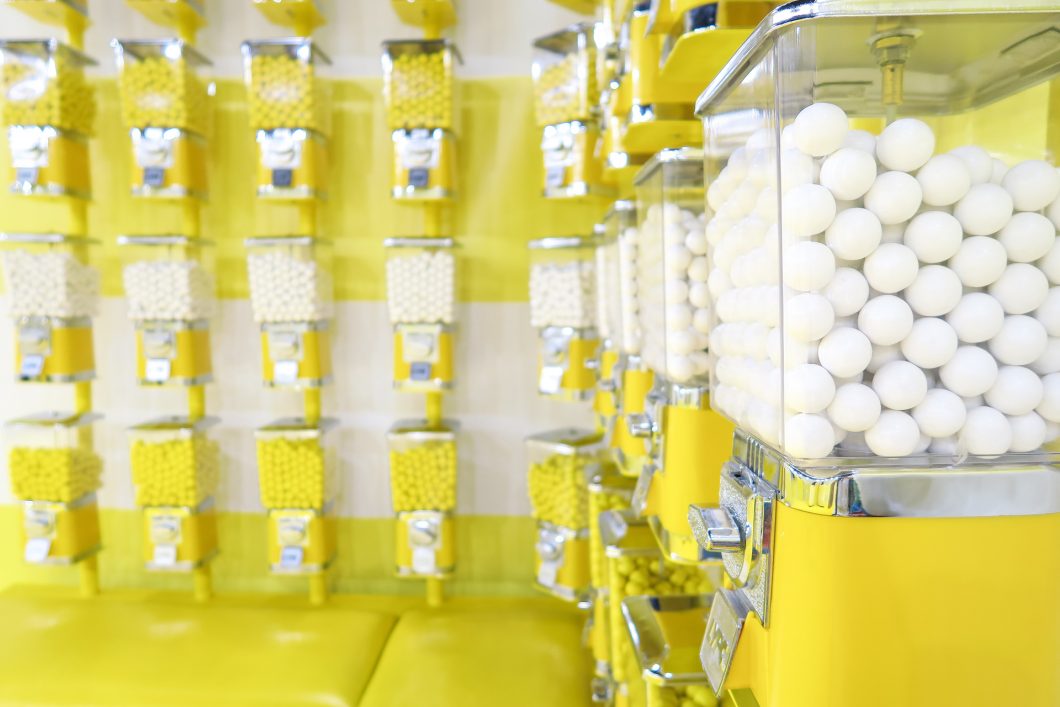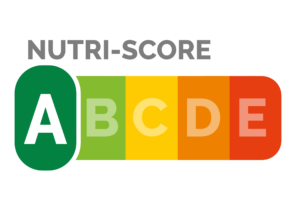Product development • Sorbitol is the most commonly used sugar alcohol. In the food industry, it is mainly used to provide sweetness with fewer calories and, above all, less impact on blood sugar levels than compared to sugar. The substance is found in fruits and berries but is produced industrially from starch from wheat and other starchy crops.
Sorbitol is naturally found in several fruits but is produced industrially from wheat and other starchy crops. Thus, one of the world’s most common crops becomes one of the world’s most common sweeteners. But how?
From glucose to sorbitol
Sorbitol is a sugar alcohol. This means that the chemical structure is the same as a sugar type, except for two hydrogen atoms that have been attached on an oxygen atom.
This is done with hydrogenation, which means that the sugar is exposed to hydrogen, and often also pressure, in the presence of a metal that acts as a catalyst. Usually, it’s a nickel alloy. The metal becomes a landing place where a sugar molecule and a hydrogen molecule can settle before they combine and become sugar alcohol. None of the metal is included.
The sugar, which in this way is converted to sorbitol, is glucose.
It starts with starch
Glucose is in turn produced by hydrolysis of starch. The starch is dissolved in water, acid or enzymes are added, and the mixture is heated. It causes the starch, which is chains of hundreds of glucose molecules, to be broken up into smaller chains, that are broken up into even smaller ones, and so on until one gets glucose syrup that mostly consists of just glucose.
The starch that everything starts with can be from potatoes, corn, cassava – or wheat.

Wheat
Wheat can be grown with good yields in large parts of the world, as it is durable and thrives in everything from a few degrees above zero, to a comfortable 32 degrees Celcius. However, wheat thrives best when it is around 20 degrees. The cultivation takes place in clay soil, preferably chalky ditto.
There are many types of wheat, but bread wheat (Triticum aestivum) constitutes about 95 per cent of all wheat grown. Depending on whether the wheat is sown in the fall or spring it is called autumn wheat and spring wheat, respectively.
Autumn wheat is sown in mid-September. Then it has time to germinate and establish a root system before the frost strikes. Coldness causes the sprout to go into hibernation. It will not continue to grow until the spring sun warms the ground. Autumn wheat is harvested from mid-May. Spring wheat is planted in spring and harvested in the fall.
Wheat is the second most cultivated crop in the world, beaten only by corn. Most wheat is cultivated in China, India, and Russia. On the other hand, the European Union taken together is at the top with 150–160 million tonnes per year.
And some of it is used to produce sorbitol.

Sweet from sour berries
Sorbitol is not only produced by starch from wheat and other crops.; it is also produced in your body. It happens when an enzyme called aldose reductase converts glucose into sorbitol in your tissues. The enzyme is found a bit here and there in the body, including the liver, kidneys and red blood cells, but also in the ovaries and the seminal vesicle.
Sorbitol is also found in fruits and berries, such as plums, pears, peaches, apples, nectarines, apricots, strawberries, raspberries, blackberries, cherries – and rowan berries.
In fact, it was in the juice of rowan berries that the sweet substance was discovered. Therefore, sorbitol got its name from the scientific name for rowan berries – Sorbus aucuparia.

Sorbitol was discovered in 1872 by the French chemist Jean-Baptist Boussingault. However, it took more than half a century before it began to be used in food.
Initially, the volumes were small, and it was used to replace sugars in foods for people with diabetes. Compared to regular sugar, sorbitol has only a minimal effect on blood sugar. The glycaemic index (GI) of sorbitol is 6 compared to sugar which has 92 if white bread is used as reference (GI 100).
It was not until the mid-1950s that sorbitol began to be produced in larger quantities. By then, sorbitol had started to be used as a moisture-binding ingredient in skincare and cosmetics products, and as a sugar substitute in sweets. Areas of use that are still standing today.
Popular despite issues
Sorbitol is cheap. It is the most affordable sugar alcohol on the market. Therefore, it is also popular as an alternative to sugar. But it has its issues as such.
Sorbitol is not calorie-free – but 2.4 kcal/gram is significantly less than the 4 kcal/gram of sugar. On the other hand, sorbitol is not as sweet as sugar. It has 50–60 per cent of the sweetness of regular sugar. Therefore, the same sweetness requires twice as much sorbitol compared to sugar, and then we have about the same calories. But that’s not the worst…
Like all sugar alcohols, sorbitol has a laxative effect. How much you can eat per kilogram of body weight before it is time to run to the toilet varies between different sugar alcohols. Best in the class is erythritol. During one day, you can safely eat 0.66 grams per kilogram of body weight. Worst in class is… You guessed it: sorbitol. During one day, you should not consume more than 0.17 grams per kilo of body weight.
Sorbitol has its place
Sorbitol also has good sides. Among other things, it can serve as an excipient, and as a humectant in food. Besides, it has a smooth, albeit chilly, taste that suits, among other things, chewing gum, throat tablets, candies, ice cream, frozen desserts and cookies.
Therefore, after all, it can be used to replace sugar, but rarely alone. It needs to be combined with other ingredients that also help to fill the space of sugar – both literally and figuratively.
The question is what the other ingredients are and in what proportions they should be used. Also, new ingredients pose new challenges in manufacturing. Don’t worry: use sweetened fibres.

Try sweetened fibres
Sweetened fibres is a homogeneous composition of dietary fibres and plant-based sweeteners. It is a turnkey solution for food manufacturers who want to reduce or altogether avoid added sugar, but cannot afford the time and cost needed to develop a whole new recipe with new and perhaps unfamiliar ingredients like sorbitol.
If you want to try sweetened fibre in your recipe or formula, we can send you a sample of our brand EUREBA®. Call us on telephone number 08-613 28 88 or send an e-mail to info@bayn.se. You can too read more about them and download product sheets.
Please, share this article if you liked it.
[et_social_share]




